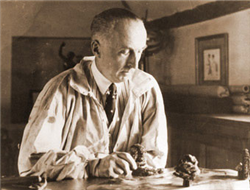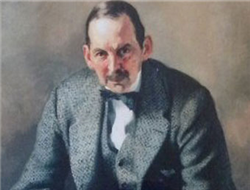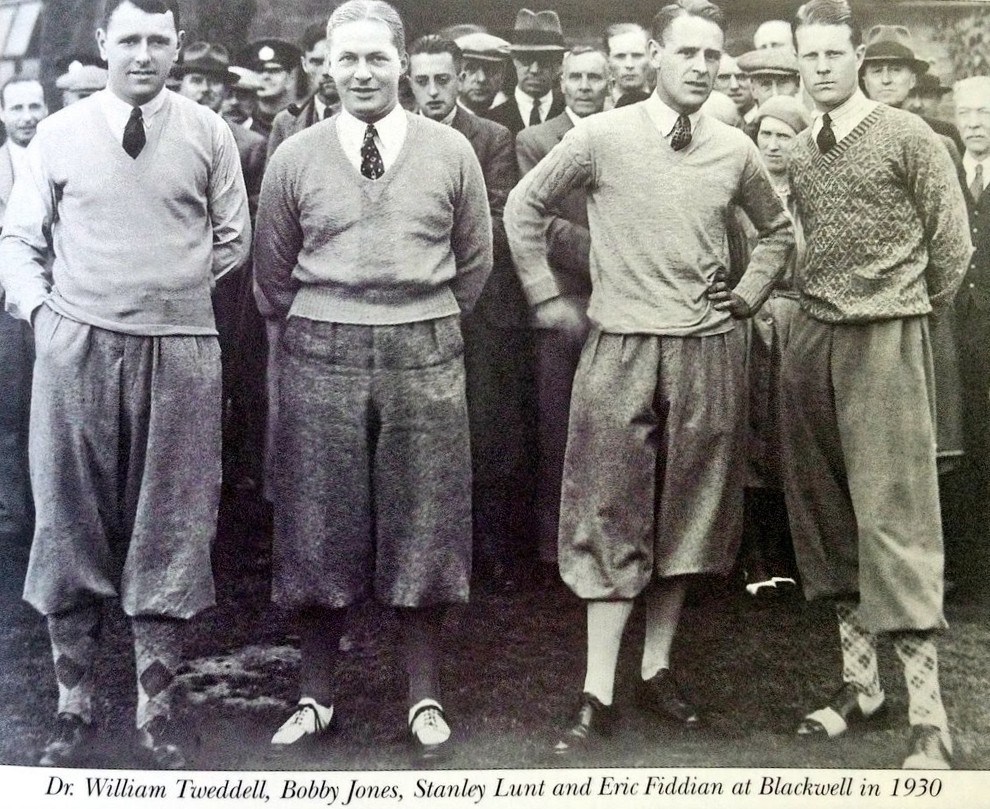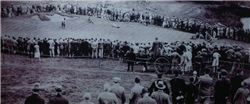The Founding of Blackwell Golf Club
Much like many other historic Golf clubs in the UK, Blackwell was founded by a small group of local businessmen during a period of rapid expansion in the game in the late 19th century. In 1893, the 5 gentlemen secured a plot of 49 acres on which to design the first rudimentary 9 hole layout.
Serendipity was on the side of Blackwell as the land proved ideal for golfing, with rolling terrain and soil rich and sandy in composition. It is for this reason that Blackwell drains well to this day, and we are proud of the condition the course enjoys all year round.
Throughout those early years, the club grew in stature, and quickly became recognised as a site for fine amateur golf, hosting numerous exhibition matches and recognised as a sanctuary for camaraderie, and good golf in equal measure.
Fowler & Simpson
On the 4th August 1923, the newly established 18 hole course was re-opened. What Fowler & Simpson achieved at Blackwell on a relatively small acreage is a tribute to their skills and one of only 7 courses they collaborated on across the UK. What they left was a course that is intricate and challenging, incorporating some of their best design attributes with fabulous Par 3’s and an emphasis on strategy and visibility presenting the golfer of all playing abilities with various options, as well as challenge and pleasure in equal measure which remains a core component of the course today.
Tom Simpson
 Originally inspired by the early work at Woking Golf Club at the turn of the century, Tom Simpson’s official start in golf course design came in the form of a partnership with Herbert Fowler, however Simpson quickly established his own practice and worked for a number of outstanding clients in his own right, including Ballybunion and County Louth in Ireland, Cruden Bay in Scotland, Royal Porthcawl in Wales, Liphook in England and the Royal Golf Club of Belgium. The work he did on new courses is best seen in Europe, particularly France where he designed Hardelot (Les Pins), Chiberta, Fontainebleau and two courses north of Paris; Morfontaine and Chantilly. All 27 holes at Morfontaine are sublime, while the best holes at Chantilly and Fontainebleau are as good as any on the European mainland. Simpson also added key holes to St Enodoc, Rye, Carnoustie and Muirfield and designed the charming Royal GC des Fagnes course near Spa in Belgium, which, like Chantilly, features some wonderful cross bunkering.
Originally inspired by the early work at Woking Golf Club at the turn of the century, Tom Simpson’s official start in golf course design came in the form of a partnership with Herbert Fowler, however Simpson quickly established his own practice and worked for a number of outstanding clients in his own right, including Ballybunion and County Louth in Ireland, Cruden Bay in Scotland, Royal Porthcawl in Wales, Liphook in England and the Royal Golf Club of Belgium. The work he did on new courses is best seen in Europe, particularly France where he designed Hardelot (Les Pins), Chiberta, Fontainebleau and two courses north of Paris; Morfontaine and Chantilly. All 27 holes at Morfontaine are sublime, while the best holes at Chantilly and Fontainebleau are as good as any on the European mainland. Simpson also added key holes to St Enodoc, Rye, Carnoustie and Muirfield and designed the charming Royal GC des Fagnes course near Spa in Belgium, which, like Chantilly, features some wonderful cross bunkering.
Tom Simpson was one of the most passionate advocates for strategic design and the man who apparently coined the phrase ‘Golden Age’, in reference to golf’s boom years of the 1920s. Simpson and Wethered’s “Design For Golf” published in 1929 remains one of the most under-rated texts on golf course architecture. It is remarkable because so much of Simpson’s remaining work proves that he put it into practice, unlike some of the other better known authors and architects. For those interested, reading this book followed by some visits to his untouched work is highly enlightening. Any aspiring golf course architect could do far worse than to read and absorb what he wrote. It is a blue print for intelligent golf where, as he frequently wrote, “the Tiger, poor brute, deserves no mercy”. His “low profile” style, now more commonly known as “minimalist”, is as relevant now as it has ever been.
Herbert Fowler
 William Herbert Fowler (28 May 1856 – 13 April 1941), designed Walton Heath Golf Club , and many others in the UK including; Beau Desert, Delamere Forest, Saunton Sands, The Berkshire (Blue & Red) and his work in the United States includes; Bethpage (Black), Eastward Ho! and in 1922 he redesigned the 18th hole of the Pebble Beach Golf Links. During a 1921 championship, the course owners received complaints about the short 18th hole, and asked Fowler to resolve the problem. He added just under 200 yards to the hole, transforming it from a 379-yard par 4 to a 548-yard par 5.
William Herbert Fowler (28 May 1856 – 13 April 1941), designed Walton Heath Golf Club , and many others in the UK including; Beau Desert, Delamere Forest, Saunton Sands, The Berkshire (Blue & Red) and his work in the United States includes; Bethpage (Black), Eastward Ho! and in 1922 he redesigned the 18th hole of the Pebble Beach Golf Links. During a 1921 championship, the course owners received complaints about the short 18th hole, and asked Fowler to resolve the problem. He added just under 200 yards to the hole, transforming it from a 379-yard par 4 to a 548-yard par 5.
He believed strongly that courses should follow the contours of the land, and have a natural feeling, shunning the use of “man-made contrivances”, believing that topography could test the world’s best golfers just as adequately. He had strong views on many aspects of a golf course, including bunkers, which he believed should have gradual slopes to allow the ball to roll to the base. Contemporaries suggested that he designed large courses that would favour big hitters such as himself, but Fowler strenuously denied this, always claiming that they were designed with fairness in mind. He was described in a book by Bernard Darwin as “perhaps the most daring and original of all golfing architects, and gifted with an inspired eye for the possibility of a golfing country”.
Exhibitions & Tournaments



Blackwell has always enjoyed a fine reputation among amateur golfing circles and many famous faces from the professional and amateur ranks have played at Blackwell over the years.
Dr William Tweddell was an honorary member at Blackwell and one of the finest amateur golfers of his generation. As the winner of the Amateur Championship in 1927, he went on to captain the Walker Cup side of 1928 at Chicago Golf Club where he would lead the team against the American contingent captained by the great Bobby Jones.
Like many of the prestigious clubs of the era, Blackwell was famed for hosting various exhibition matches which were instrumental in funding the professional careers of golfers of the day. In an event watched by over 2,000 spectators; American ‘bon-viveur’ Walter Hagen defeated Archie Compston in 1929 over 36 holes only two weeks after winning The Open championship at Muirfield in East Lothian, Scotland.
More famously, Blackwell played host to Bobby Jones the day after his Open Championship win at Royal Liverpool in 1930 before he travelled back to the United States to complete the legendary “Grand Slam’ at Interlachen and Merion in the later summer months. The match was a long standing commitment between Jones and Tweddell from their Walker Cup meeting of 1928, and the pair played against the local pair of Stanley Lunt and Eric Fiddian.
Blackwell are also proud to cite 1988 US Masters, and 1985 Open Championship winner Sandy Lyle MBE as an honorary member of Blackwell, who played a great deal of golf at Blackwell in his formative years.



